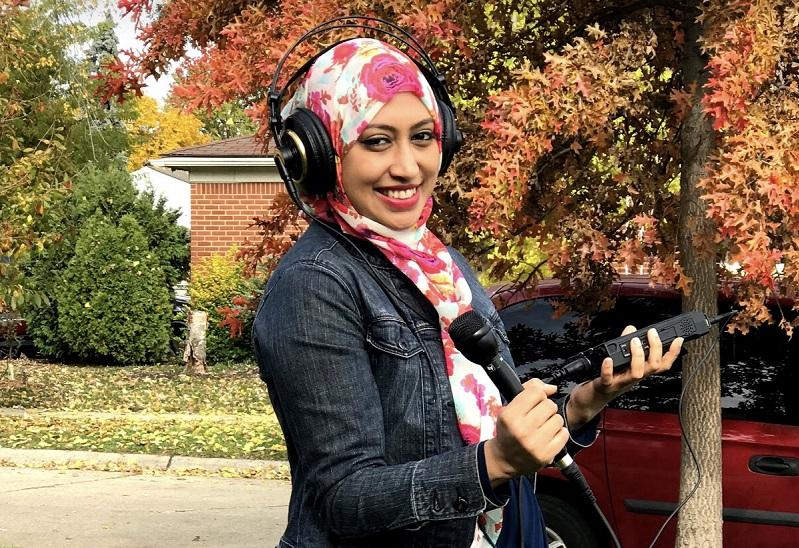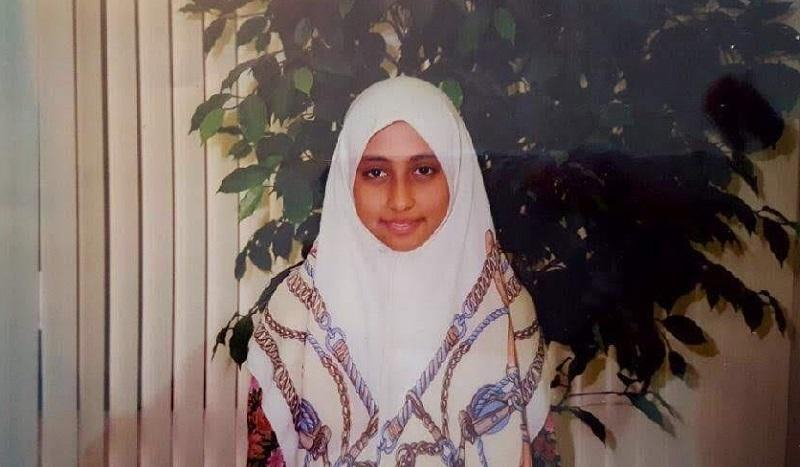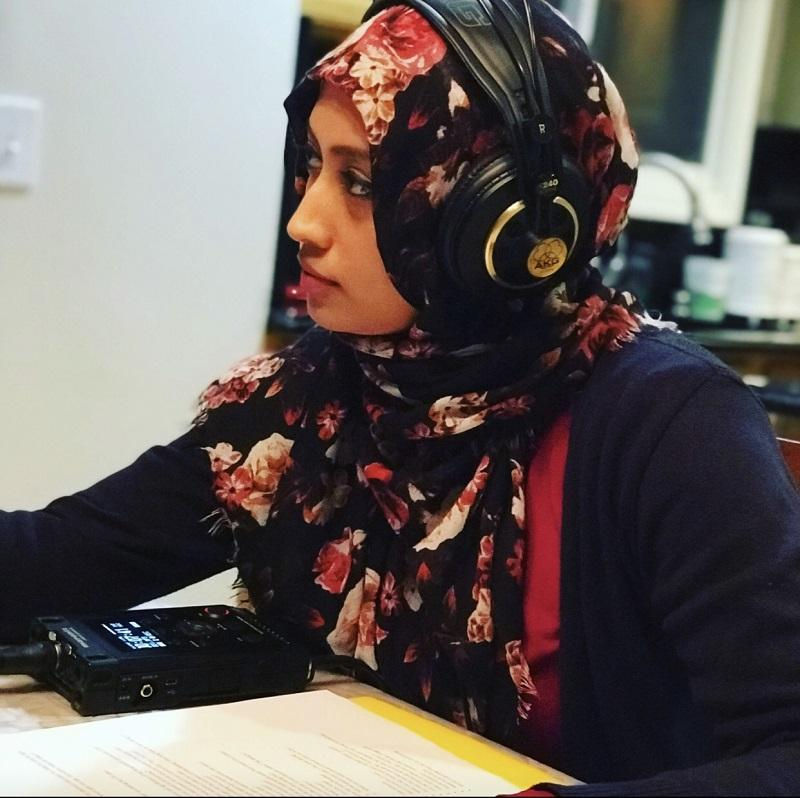As a Journalist, Here's Why I Choose to be Visibly Muslim
Community
|
Dec 20, 2019
|
7 MIN READ

Editor's note: What does it mean to "wear it like you mean it?" We know this coming year may be hard for Muslims, especially visibly Muslim women, and we invite you (and ourselves) to renew our intentions and reflect on what our hijab (and faith) mean to us. Throughout the month we are sharing stories of what this means to women around the U.S. as well as highlighting local heroes who are quietly doing good and hard work in their communities.
By Nargis Rahman
Hijab became a big part of my life when I was nine years old. However, I didn’t fully embrace the power of hijab until much later in life. Throughout my life I struggled with finding my identity and standing out on my own terms, as a hijabi woman and as a journalist. Hijab is my dignity and honor, a means for me to have nearness to Allah, and a way for me to give dawah to others. As part of Haute Hijab’s “Wear It Like You Mean it” campaign this month and as we gear up for 2020 and what will probably be a difficult election cycle for many of us, I decided to turn my reporter’s questions on myself – a sort of interview with myself – to better understand why it’s important to me to be visibly Muslim as a journalist.

Nargis Rahman on the job as a reporter.
When did you start wearing hijab?
I was nine years old and living in Florida, and my dad pulled me to the side one day and told me we were Muslim, like our new Turkish neighbors who wore hijab. He asked me to consider wearing hijab like them. At the time, my mother wore a dupatta (a loosely-wrapped scarf that is part of South Asian apparel) publicly and a cap to cover her hair at work. After that day I started wearing hijab. I didn’t think much of it. Our Turkish neighbors left soon after. My sister and I became the only hijabis in our elementary school, and soon after I was the only hijabi in my middle school.
Over the next few years I was stopped in the hallway by strangers at school who asked, “Why are you wearing that thing on your head?” I’d reply, “Because of my religion.” I had a strong certainty about the purpose of wearing hijab – for God, first and foremost. And because I had grown up with the students I went to school with, they were accepting and it became part of my norm.
How has your hijab journey changed?
When I was 12 years old, my family moved from Florida to Hamtramck, Mich., which borders Detroit and is an immigration hub for Bangladeshi, Yemeni, Pakistani, Bosnian and other Muslims. However, I was still a misfit. I didn’t know how to be a Bangladeshi hijabi. The Muslim community I grew up in was diverse, and everyone wore hijab differently. For example, many girls in the Bangladeshi community wore hijab only to the masjid and school, as customary in parts of Bangladesh as part of the school uniform. On the other hand, the Yemeni girls wore all black hijab and abaya to school. Bosnian girls didn’t wear hijab. Meanwhile, I wore long-sleeved floral Gap shirts with colorful pants and white or black two-piece hijabs.
I wore hijab to school, the masjid and social events. People didn’t know if I was Bangladesh or Yemeni and therefore hesitated to speak to me. I didn’t know with whom I fit in with the most.

The author in an old family photo in third grade.
Over the years I struggled to understand why and how to wear hijab. I came across girls who wore it because their parents made them wear it publicly and others who wore it culturally. For example, in the early 2000s, it was socially acceptable in the Bangladeshi community for young girls to remove hijab at weddings and social events. In the Yemeni culture in Hamtramck, women were segregated from men at weddings, and yet the unmarried girls wore hijab among women. I couldn’t understand why. Throughout the years I battled with identity – Muslim first? Bangladeshi first?
I found myself aligning more with religion first. In Florida I had grown up in a strong masjid community where women attended regular halaqas, went camping and went to family cruises and picnics. In Michigan, women in our community didn’t go to the masjid – except for one or two that had adequate and regular spaces for women. This experience made me long for more closeness to Allah, and I strove to find it over the years.
What makes you most proud about being hijabi?
Hijab became the reason why I stood out and a way I could give dawah, (educating people about Islam and Muslims) on the go. Although I attended middle school and high school with a lot of hijabis, I was one of the only Bangladeshi girls at the time who wore hijab full time.
In college, I was one of the first hijabi journalism students to participate in the Journalism Institute for Media Diversity with another fellow student, Aysha Jamali, who wore hijab. Together, we navigated how to be Muslim in professional settings as a reporter and left behind a copy of the Quran for other journalism students to read and learn in our shared JIM library.
How has your style changed, and how does that play into you being a visibly Muslim woman?
My hijab style evolved from the solid colored two-pieces to bright colors. Up until middle school, I primarily wore white or black hijabs. I didn’t even realize this until someone asked me if they were the only hijabs I had. In high school and my first year of college, I mostly wore black hijabs – to the point that my sister and a good friend both approached me in the span of two days apart to ask me if everything was okay! Why didn’t I wear any colors? Was I depressed? I hadn’t given it much thought up until that point. Both of them dressed very nicely and color coordinated their outfits – noting that it was sunnah to dress well.
I had always wanted to just blend in and not be noticed.
My go-to outfit in those days was a pair of jeans, a black top, black hijab all topped with a black jacket with a hoodie. But from that day on I made a sincere effort to wear colors, because I realized that I should celebrate my faith and attempt to better represent my faith, which I was passively doing so through what I wore.
Up until that point, I didn’t give it much thought. I didn’t have to be flashy, but I also should look “approachable,” I thought. I took a bold step and wore a red hijab a few days later, and held my breath to see what happened next. I had never been a person who was into fashion nor was I complimented on what I wore. In fact, I don’t take compliments well. However, I noticed people were nicer and more willing to speak to me (I usually introduce myself first) and ask questions about Islam and Muslims after the color change.
I also realized I could look nice, and there was nothing wrong with that in Islam. It improved my mood and helped me express myself. Now, I purposely don’t wear black hijabs to work often, although I have eight black hijabs and it’s my favorite hijab color. There are also a lot more options for hijab colors, styles and prints than there were even just 10 years ago. Now I typically wear a long dress, a cardigan and a bright-colored or floral print hijab.
I find it fulfilling that people feel comfortable with asking me questions about my hijab journey. I have been asked questions since I was nine. I am used to it.

The author at work doing an interview.
What role does hijab play in your professional life?
In 2010 I interned at the TV station Fox 2 News in Detroit. I asked to pray in the editorial newsroom and sometimes on the news van. A few of the anchors asked me general questions about Islam, from why I wore hijab to why I didn’t shake hands with men. This led me to write, “Sorry, I don’t shake hands,” in the Wayne State University student newspaper. I learned that it was better for me to accept being a Muslim woman and just be myself rather than trying to justify who I wasn’t to coworkers and peers around me.
Later at WDET 101.9 FM, I asked for a prayer space and time off on Fridays to attend Jummah prayers nearby at the Cass Masjid. The news director, Jerome Vaughn, was more than willing to allow the accommodations, noting that people simply didn’t ask before. (It can be intimidating to ask for prayer space at work). I realized my experiences are not mine alone, and I could bring better awareness for Muslim rights by speaking up.
From 2012-2017 I worked as the CAIR Michigan Office Manager, where being visibly Muslim is part of the job. It was there, probably most of all, that I learned to be unapologetically Muslim in public spaces.
As a freelance writer, I counter the negative narrative of Islam and Muslims by showing up to cover important news, events and stories. I interview various subjects in my hijab, albeit with people who aren’t expecting to see someone like me. Simultaneously, I try and keep the door open for people to ask questions about Islam to provide positive narratives about Muslims.
I will continue to be a visibly Muslim woman in 2020, because it makes me who I am. It’s who I’ve been all along, for the majority of my life. My hijab represents confidence, solidarity and my unwavering faith in Allah to take me where I am needed most.
Subscribe to be the first to know about new product releases, styling ideas and more.
What products are you interested in?

